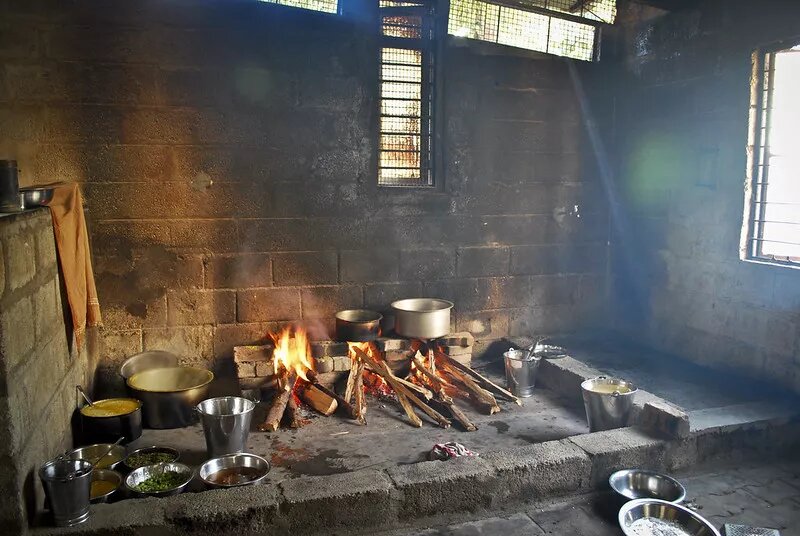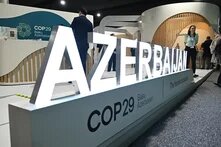
The country’s transition rate to clean cooking fuel has to be tripled to meet SDG 7 goals and mitigate health and climate change.

In India, emissions from the residential sector are a significant component of both air pollution and greenhouse gas (GHG) emissions. Emissions from the residential sector comprise mainly indirect emissions due to electricity consumption and direct emissions released by inhabitants due to burning of fossil fuels and biomass.
Cooking, lighting, heating, cooling, refrigeration and pumping characterise the energy consumption in the residential sector. In 2016, the year for which the latest data is available from the Government of India, the GHG emissions from the residential sector was 135 million tonnes (MT) of CO2e, which is approximately 5 per cent of the total GHG emissions from the country, excluding land use, land-use change and forestry (LULUCF).[i] However, the actual GHG emissions are likely much higher due to the fraction of non-renewable biomass (fNRB), which is unsustainably harvested and the emission of short-lived climate pollutants (SLCPs) like black carbon that are emitted during biomass burning.[ii]
The residential sector is also by far the biggest source of PM (particulate matter) 2.5 emissions in India. PM 2.5 is the primary contributor to the terrifying levels of air pollution in the country, especially in the Indo-Gangetic Plain (IGP) and pollution hotspots like Delhi. Moving households to cleaner fuels will have the dual benefit of reducing GHG emissions and air pollution. Thus, the transition to clean cooking and heating fuel is a co-benefit agenda.
Cooking and heating fuel use
Cooking and heating fuel can be broadly classified into two categories based on their health impacts – polluting fuels, which include charcoal and kerosene, as well as solid biomass fuels such as fuelwood, dung cakes and agricultural residue, and non-polluting fuels include LPG, PNG, Biogas and electricity. The determining factor for this categorisation is whether the fuel pollutes at the point of consumption or not. Thus, even though electricity may not be produced cleanly, for instance, in coal-fired power plants, it is clean at the point of consumption.
The National Sample Survey (NSS) has published data on the use of different kinds of cooking fuel in India in its 58th round (2002), 68th round (2011) and 78th round (2021). It has published the data on heating fuel only in the 78th round.
In the last 20 years, the percentage of households using polluting fuel for cooking more than halved, from 76 per cent to 36.6 per cent. The number of households using polluting fuel has reduced from 157.6 million in 2002 to 110.1 million in 2021. So, about 50 million households have shifted to clean cooking fuel, mostly LPG, in the last 20 years.
Table 1: Households using polluting fuel for cooking: 2002, 2011 and 2021
As far as heating fuel is concerned, the only data available is for 2021. As per NSS 78th round, about 63.4 per cent of the households used polluting fuel for heating. This translates into close to 200 million households. So, almost twice as many households use polluting fuel for heating than cooking.
Table 2: Households using polluting fuel for heating in 2021
GHG emissions from heating and cooking
About 23.2 per cent of firewood used for household cooking in India is unsustainably harvested, i.e. CO2 released is not transferred back in woody biomass form, resulting in net CO2 addition to the atmosphere.[iii] If fNRB that is unsustainably harvested is >11%, the net climate effect of cooking with LPG is lower than cooking with firewood. So, shifting to LPG from biomass would have a net-positive impact on GHG emissions.
However, as short-lived climate pollutants (SLCPs) like black carbon are also emitted during firewood burning, the positive impact on GHG emissions due to the shift to LPG cooking is likely much higher. If we consider global warming potential at a 100-year timescale for SLCPs (and their precursors) and (GHG+SLCP) emissions from both upstream processes (e.g. extraction) and end-use at 23.2 per cent fNRB, the transition from firewood to LPG could result in as much as 70 per cent reduction in net climate impact.
From the above, it can be easily seen that a shift to clean cooking fuel like LPG would significantly reduce GHG from the residential sector.
Air pollution from cooking and heating
The problem with the use of polluting fuels in cookstoves is that they cannot be meaningfully filtered. Thus, these fuels, which do not burn completely, contribute all their pollutants, like PM 2.5, to the surroundings. This particulate matter first affects the air quality inside the residential space (household air pollution) before polluting the outside air (ambient air pollution).
In India, the domestic use of polluting fuels for all purposes and consequent household air pollution (HAP) is estimated to contribute between 22 per cent and 52 per cent of national ambient air pollution (AAP)[iv]. Approximately, 800,000 lives are lost due to HAP and another 400,000 due to AAP every year[v]. This does not account for the other health costs that may not be fatal but impede quality of life and labour productivity.
A recent research by iFOREST shows that the PM 2.5 emissions from cooking and heating fuel contribute 48 per cent of national PM 2.5 emissions, making it the country's single largest source of PM 2.5 emissions.
Table 3. PM 2.5 emissions from different sectors in India
SDG 7 and the need for energy transition
Sustainable Development Goal 7 (SDG 7) aims to “Ensure access to affordable, reliable, sustainable and modern energy for all” by 2030. For India to meet this goal would mean shifting 110 million households to clean cooking fuel in the next seven years, or about 15 million households yearly. On an average, about 5 million households have shifted to clean cooking fuel every year in the last two decades. So, for India to meet the SDG 7 goals, the transition rate to clean cooking fuel has to be tripled from the past.
This transition would reduce millions of tonnes of GHGs, almost halve PM 2.5 emissions and avoid 800,000 premature deaths. This is the biggest co-benefit agenda for the country.
Endnotes
[i] MoEFCC. (2021). India: Third Biennial Update Report to the United Nations Framework Convention on Climate Change. Ministry of Environment, Forest and Climate Change, Government of India.
[iii] Floess, Emily, Andrew Grieshop, Elisa Puzzolo, Dan Pope, Nicholas Leach, Christopher J Smith, Annelise Gill-Wiehl, Katherine Landesman, and Rob Bailis. 2023. “Scaling up Gas and Electric Cooking in Low- and Middle-Income Countries: Climate Threat or Mitigation Strategy with Co-Benefits?” Environmental Research Letters 18 (3): 034010.https://doi.org/10.1088/1748-9326/acb501.
[v] ibid




